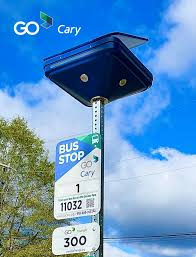Smart cities are more than just interconnected devices; they are living, breathing ecosystems designed to improve the quality of life for their citizens. And at the heart of any thriving city lies its transportation network. Smart transportation systems are revolutionizing urban mobility, making it safer, more efficient, and more sustainable. This includes not only personal vehicles but also mass transit systems that serve a vital role in urban centers.
Why Smart Transportation Matters
- Reduced Congestion: Traffic jams are a major source of frustration and lost productivity. Smart traffic management systems, powered by real-time data from IoT sensors and cameras, can dynamically adjust traffic flow, optimize routes, and reduce congestion.
- Enhanced Safety: Smart transportation incorporates advanced safety features such as connected vehicle technology, which allows vehicles to communicate with each other and with infrastructure to prevent accidents. Predictive maintenance systems can also identify potential safety hazards before they lead to breakdowns or accidents.
- Improved Sustainability: Electric vehicles, optimized routing, and reduced idling contribute to lower emissions and a smaller carbon footprint. Smart transportation systems can also promote the use of public transportation and shared mobility options, further reducing reliance on personal vehicles.
- Increased Efficiency: Real-time information on traffic conditions, public transportation schedules, and parking availability empowers citizens to make informed decisions about their travel plans, saving time and reducing stress.
Bus Stop Queue [Freepik www.freepik.com]
Key Components of Smart Transportation
- IoT Sensors: These devices collect data on traffic flow, parking occupancy, air quality, and other key metrics, providing a comprehensive picture of the urban environment.
- Smart Traffic Management Systems: These systems use data analytics and algorithms to optimize traffic signal timing, manage incidents, and provide real-time traffic information to drivers.
- Connected Vehicles: Vehicles equipped with sensors and communication technology can exchange information with each other and with infrastructure, enabling features such as adaptive cruise control, lane departure warning, and automatic emergency braking.
- Electric Vehicle Infrastructure: A network of charging stations is essential to support the widespread adoption of electric vehicles. Smart charging systems can optimize charging schedules to minimize grid impact and reduce energy costs.
- E-Governance Platforms: Citizens can use mobile apps and online portals to access transportation information, pay for parking, report issues, and provide feedback to city officials.
Mass Transit Integration
Mass transit is a critical component of smart transportation, offering high-capacity, efficient, and sustainable mobility options within urban areas. Integrating mass transit into a smart city framework involves several key strategies:
- Real-Time Information Systems: Providing passengers with real-time information on bus and train arrival and departure times, potential delays, and service disruptions enhances the overall transit experience. Digital displays at bus stops and mobile apps can deliver this information directly to riders.
- Integrated Payment Systems: Smart fare payment systems, such as mobile ticketing and contactless payment options, streamline the boarding process and improve efficiency.
- Optimized Routing and Scheduling: Data analytics and AI algorithms can be used to optimize bus and train routes and schedules based on passenger demand and traffic conditions. This ensures that transit services are aligned with the needs of the community and are operating at peak efficiency.
Enhancing Public Safety at Mass Transit Stops
Ensuring the safety and security of passengers at mass transit stops is paramount. Several smart city technologies can be deployed to enhance public safety:
- Smart Lighting: Adequate lighting is essential for creating a safe and secure environment at bus stops and transit stations. Smart LED lights can be equipped with sensors that automatically adjust brightness based on ambient light levels and pedestrian activity, improving visibility and deterring crime.
- Surveillance Systems: Security cameras can be strategically placed at transit stops to monitor activity and deter criminal behavior. Real-time video feeds can be monitored by transit authorities and law enforcement, allowing for rapid response to incidents.
- Emergency Communication Systems: Installing emergency call boxes or buttons at transit stops provides passengers with a direct line to transit authorities or emergency services. These systems can be particularly valuable in isolated or high-crime areas.
- Protective Barriers: Metro in Los Angeles has finalized the installation of protective barriers on its entire bus fleet to protect drivers from physical attacks. These barriers, made of shatterproof, tempered glass, have been shown to reduce assaults on bus operators by 58%.
Examples in Action
- GoTriangle (North Carolina): GoTriangle uses a Rider App to allow passengers to track buses in real time and provides service alerts via its website and social media channels. The agency also has an adverse weather plan to maintain the well-being of riders and employees during inclement weather.
- Los Angeles Metro: Metro has equipped its entire bus fleet with protective barriers for drivers to reduce assaults. The agency has also added onboard cameras, digital video recorders, and emergency buttons that operators can use to call for help.
- Miami-Dade Transit: Miami-Dade Transit integrates various smart technologies to improve public transport.
- SELS: Smart Era Lighting has been designing and building smart, solar powered LED lights and bus stops. Agencies around the US are using these to provide an illuminated location for passengers.

The Road Ahead
Smart transportation is not just about technology; it’s about creating a more livable, sustainable, and equitable future for our cities. By embracing innovation and working together, we can transform our transportation networks, including mass transit systems, into engines of economic growth and social progress. The Smart Transport Symposium, and similar events, are crucial for fostering these discussions and driving innovation forward.
Smart Mobility Symposium
📅 Date: April 17, 2025
⏰ Time: 3-5 PM
📍 Location: Central Pines Regional Council, 4307 Emperor Blvd, Suites 110, Durham, NC 2770


